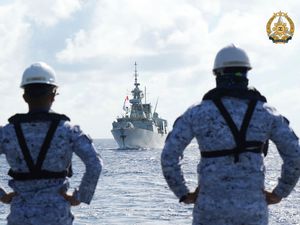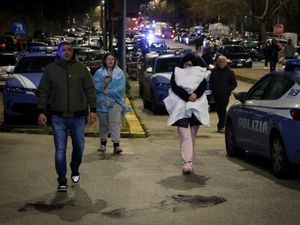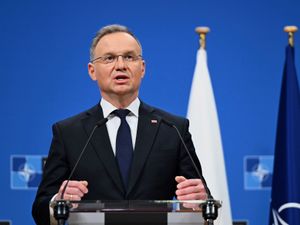US, Australia, Canada and Philippines stage military drills in South China Sea
In response, China has conducted air and sea combat patrols.

The United States, Australia, Canada and the Philippines have held air and naval manoeuvres in what they said was a show of force to promote the rule of law in the disputed South China Sea, where China has increasingly asserted its territorial claims.
In an apparent response, Beijing said it conducted air and sea combat patrols on the same day.
Adm Samuel Paparo, who heads the US Indo-Pacific Command, and top military and defence commanders from Australia, Canada and the Philippines said in a joint statement that they “stand together to address common maritime challenges and underscore our shared dedication to upholding international law and the rules-based order”.
They said they were staging the two-day exercises to uphold unhindered passage in the Indo-Pacific region.

China has long claimed much of the South China Sea, a key global trade and security route, and vowed to defend its territorial interests at all costs.
Its claims overlap those of smaller coastal states, including the Philippines and Vietnam, hampering their access to traditional fishing areas and disrupting oil and gas exploration in their internationally recognised exclusive economic zones.
“The naval and air force units of participating nations will operate together, enhancing cooperation and interoperability between our armed forces,” the commanders said.
“The activity will be conducted in a manner that is consistent with international law and with due regard to the safety of navigation and the rights and interests of other states.”

A Philippine military official said the navy ships and fighter jets would conduct anti-submarine warfare drills, combined sea passage manoeuvres and communications checks.
A Philippine navy spokesperson, Rear Adm Roy Trinidad, said the exercises are not directed at any country but are “a collective expression of support for a rules-based international order”.
China said it held joint sea and air combat patrols on Wednesday near Scarborough Shoal, a disputed territory in the South China Sea, in an apparent response to the exercises.
A short statement from the Chinese military’s Southern Theatre Command indicated that it was aware of “military activities that disrupt the South China Sea” and that they were “under control”.
China regularly accuses the US, the Philippines and others of undermining regional peace and stability though their military activities.

Adm Paparo and the other military commanders, Adm David Johnston of the Australian Defence Force, Gen Jennie Carignan of the Canadian Armed Forces and Gen Romeo Brawner Jr of the Armed Forces of the Philippines, said their countries “uphold the right to freedom of navigation and overflight, other lawful uses of the sea and international airspace, as well as respect for maritime rights under international law”.
They did not mention China by name but said their nations affirm a 2016 arbitration ruling on the South China Sea disputes “as a final and legally binding decision on the parties to the dispute”.
The ruling invalidated China’s expansive claims in the South China Sea, but Beijing refused to participate in the Philippines-initiated arbitration, rejected the decision and continues to defy it.
Hostilities in the disputed waters have flared particularly between Chinese and Philippine coast guard and naval forces at two disputed shoals since last year, renewing fears that the confrontations could degenerate into a larger armed conflict involving the United States, Manila’s long-time treaty ally.
After an alarmingly violent June 17 confrontation at Philippine-occupied Second Thomas Shoal in the South China Sea, China and the Philippines reached a temporary agreement last month aimed at preventing further clashes.





